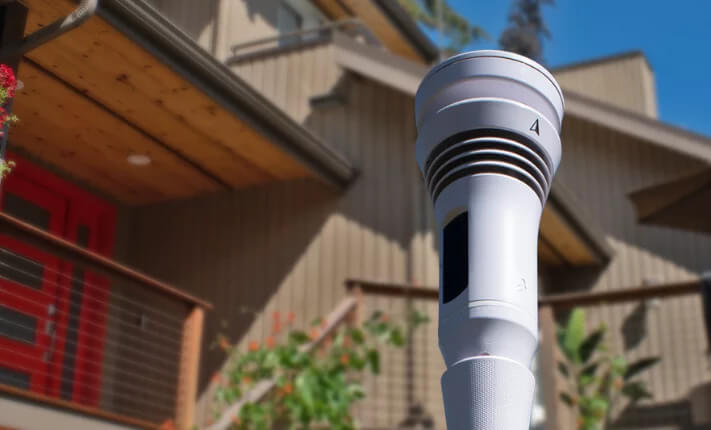
Weather forecasters often use the terms rain and showers interchangeably during weather reports, but the two aren’t the same. Which begs the question: What’s the difference between rain vs. rain showers?
Both rain and showers are types of precipitation, but they differ in duration and geographical coverage. Understanding the key differences between the two can help you better interpret your local weather forecast.
- Types Of Rain Intensity
- What Is The Difference Between Rain And Showers?
- What Are Scattered Showers?
Types Of Rain Intensity
The American Meteorological Society (AMS) defines rain or precipitation intensity as the rate of rainfall in an hour. Meteorologists usually measure it in millimeters (mm) or inches (in) per hour.
Common categories of rainfall intensity include:
- Light rain: less than 2.5 mm (0.10 in) of rain per hour
- Moderate rain: ranges between 2.5 and 7.6 mm (0.10 to 0.30 in) of rain per hour
- Heavy rain: ranges between 7.6 and 50 mm (0.30 to 2.0 in) of rain per hour
- Violent rain: exceeds 50 mm (2.0 in) of rain per hour
Heavy or violent rainfall can impact visibility, safety, and daily activities. It can even cause flash flooding, which poses a high risk to the public.
Is the rain unusually heavy in your area? Learn how much rain is a lot in different regions of the U.S.
What Is The Difference Between Rain And Showers?
Showers vs. rain: What’s the primary difference? Showers or rain showers are a type of precipitation that’s short, scattered, and sporadic. Showers are also localized, which means one part of town may receive rainfall, while a nearby area stays dry.
In contrast, rain lasts for a longer time and is continuous. Rain also happens over a larger geographical area. So when weather forecasters say it will rain, they often mean most or all parts of a locality will experience rain that lasts several hours or even the entire day.
In short, showers are short and scattered, while rain is steady and persistent, covering a wider area evenly.
Discover the best weather for gardening tasks and best smart irrigation systems in our detailed guides.
What Are Scattered Showers?
Meteorologists often use the words ”scattered,” ”isolated,” and ”widespread,” when describing showers. These terms refer to the chance of rain in a forecast area rather than the rain intensity.
Scattered showers happen when there’s a 30% to 50% chance of precipitation in a forecast area. Here’s how they differ from other types of showers:
- Isolated showers: Signify a 10% chance of precipitation
- Widespread showers: Denotes a 50% or more chance of precipitation
Want to understand rain forecasts better? Learn what rain percentage means in weather forecasts.
Get Accurate Local Rain Forecasts With The Tempest Weather System
Predicting whether it will rain versus shower can make a huge difference to your day, especially if you are going to be enjoying the outdoors or you’re concerned about how rain will impact your arthritis. That’s why you can’t rely on unreliable weather forecasts or your gut feeling.
The Tempest Weather System takes the guesswork out of determining whether it will rain or shine. It uses real-time weather data from your backyard and Nearcast AI technology to accurately predict the weather.
Stop relying on general forecasts. Explore the Tempest Weather System to get accurate local rain forecasts on your smartphone.

